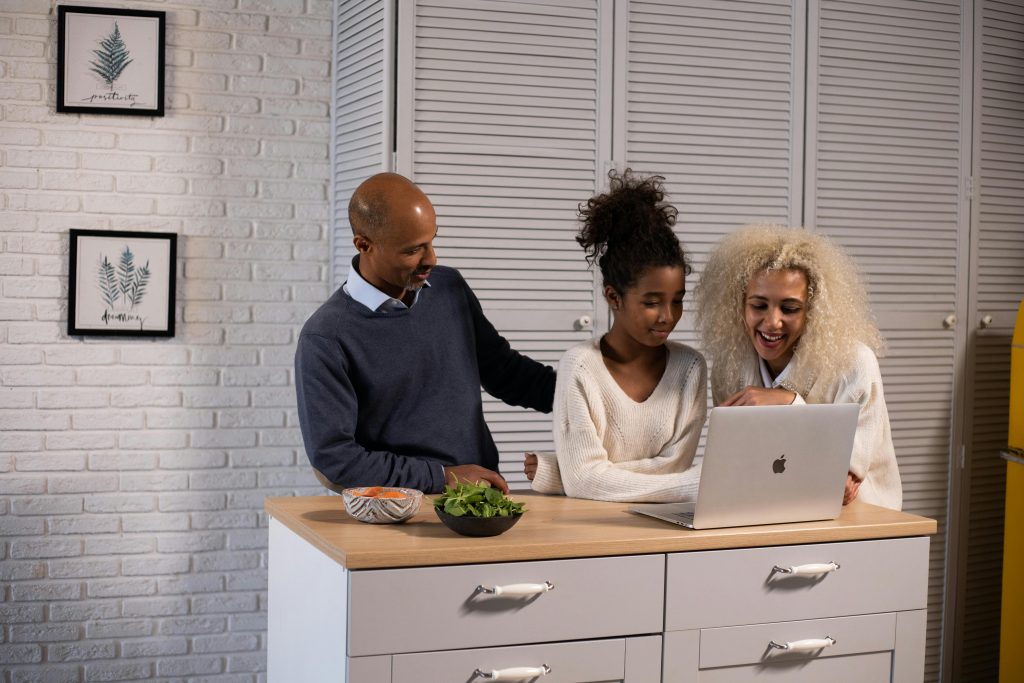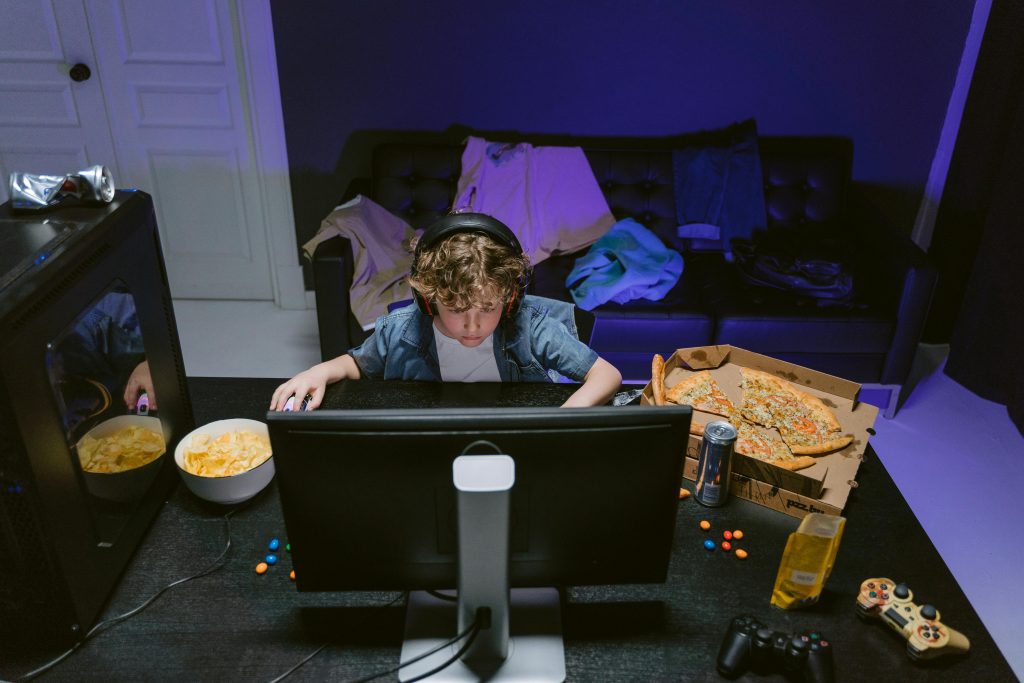Screens are everywhere, but not all screens are created equal. Children use screens and media for a variety of purposes; however, the quality of the content matters. There’s a distinction between learning from educational videos online versus mindlessly scrolling through YouTube Shorts for hours on end. Research shows that content heavily influences a child’s thoughts, actions, and beliefs. Thus, it’s important for parents to know how their child is utilizing devices. In this article, we’ll share existing literature that highlights what children are viewing and how they are engaging with the online world so that parents and caregivers can make informed decisions about their children’s screen use. We’ll also share some tips to help parents ensure that the content that children view is both safe and age-appropriate.
Youth media use today can roughly be broken down into three categories: educational, entertainment, and socialization. All three categories can be a tool that helps kids connect with others and learn. However, if children are not equipped with the resources and knowledge to navigate the digital realm in a safe, healthy manner, then all three could pose risks to children’s development and well-being. We’ll briefly discuss the potential risks and benefits of each category and talk about ways parents can mitigate the risks.

EDUCATION.
What Children Are Doing
With schools returning to in-person modality after the pandemic, kids no longer sit in remote synchronous courses for an extended period. However, they continue to use screens in and out of the classroom for educational purposes. According to a national survey, in 2022, young children and teenagers alike spent an average of 14 minutes per day on Kahoot!, an interactive and game-based learning platform. The survey also identified Duolingo (a language learning app), Quizlet (an AI-powered learning tool), and Photomath (a math camera solver app) as other popular digital learning tools used among students of all ages in the US. Websites like BrainPop and Khan Academy are additional educational tools where kids can take an assortment of online lessons on various topics. Platforms like YouTube also offer various free educational videos that users can watch and learn from.
Entertainment Educational media, including television shows and gamified apps, are also becoming increasingly more prominent. These media types are usually created with an educational or prosocial goal in mind. PBS Kids is a well-known non-profit that produces a variety of children’s programs that center around quality education – creating content for kids, parents, and educators. For instance, Molly of Denali is a series that not only teaches kids how to solve problems using informational text but also teaches them about Alaska Native culture. Common Sense Media has compiled an ongoing list of educational television shows targeted at youth so that parents and caregivers can have a better understanding of what shows are developmentally appropriate and beneficial for their children.
Concerns
Generally, parents don’t have that many concerns over children’s use of educational tools. However, an issue that could potentially come up is young children being exposed to content that’s not age-appropriate or trustworthy, especially when viewing content alone. For instance, a child could accidentally come across a war documentary with violent or traumatic imagery geared toward a more mature audience. Studies have demonstrated that young children are more susceptible to experiencing media-induced secondary trauma when exposed to imagery or content – both fictional and nonfictional – that’s frightening (e.g., news reporting of a school shooting).
Helpful Tips
We encourage parents to understand what their kids are watching during independent screen time to evaluate if the content is appropriate for their age and if the information comes from a reliable source. We also advise adults to use their discretion in deciding what content to expose their child to – keeping their child’s temperament, personality, and mental health in mind. Another option is for parents and caregivers to co-watch with youth when possible to unpack complex issues with them afterward – emphasizing their safety and validating the full range of their reactions.
ENTERTAINMENT.
What Children Are Doing
Another way in which kids use screens is for entertainment and relaxation purposes. As articulated in the previous article, entertainment media played a critical role in helping people – youth and adults – get through lockdown measures during the height of COVID-19. Research shows that entertainment media activities such as listening to music, watching a film or video, and playing a video game can improve mood, strengthen friendships, and increase competence.
In a study from 2021, researchers found that when forced to choose, more tweens and teens preferred YouTube over other popular entertainment sites. A study on children ages 0-8 years old from 2020 also parallels this finding; the data illustrated that watching online videos constituted “the largest proportion of children’s total TV and video viewing.” Watching content through subscription services (Netflix/Disney+/other) and Television (live/recorded/on demand) was also popular among younger kids since most don’t own their personal devices yet. Video gaming is another pastime and form of entertainment media that’s prevalent among kids of all ages.
Concerns
Concerns in relation to entertainment content tend to revolve around youth’s exposure to content that’s not developmentally suitable, such as violence and inappropriate language. In addition, since so many entertainment platforms now allow users to engage with others online via comments and live-chat functions, depending on the context, children’s digital safety could be jeopardized.
A key finding from a recent study published in September 2023 indicated that TikTok is irresistible, offering “bite-sized pleasure and low-friction interaction that quickly adapts to the user’s interests or mood.” Apps featuring short-form videos (e.g., TikTok, Instagram Reels, and YouTube shorts) can expose children to inappropriate content since videos just “start to play,” and users don’t need to make any decisions. After extended use, the algorithm of these apps simply “tailors” content that appeals to the user. Research findings from a study conducted in 2021 suggested that short-form videos can either undermine or enhance subjective well-being depending on the content of the videos (e.g., entertainment/relaxation vs. people/fashion) and the way they use the platform (i.e., posting or active use vs. watching videos or passive use).
Helpful Tips
Context can matter as much as the content. Researchers recommend joint media engagement, a term that describes the spontaneous and designed experiences of people using media together. This could look like a parent playing a video game with their child while posing questions and communicating to reach a common goal. Parents and caregivers can consider how they can engage with their children when using screens and media. For instance, parents could watch TV shows or movies with their children and then discuss appropriate online behaviors and the consequences of inappropriate activity with their children. Understandably, not all parents and caregivers will always have the time to co-watch media with their children. In that case, they can use Common Sense Media, a resource that helps adults gauge the developmental appropriateness and quality of the media their child engages with.
SOCIALIZATION.
What Children Are Doing
Media offers us an efficient way to stay connected and communicate with one another. Friends and family living across the globe can now text or call one another in a matter of seconds. These digital features were crucial during the pandemic as they allowed people to socialize while staying safe and abiding by social distancing measures. Through social media apps, people can stay up-to-date on the lives of their loved ones.
In a 2023 national survey on adolescents’ social media use, researchers found that YouTube, TikTok, Instagram, and Snapchat are the top four apps that children use the most often. The report indicated that youth prefer apps and sites that offer short-format videos but also allow them to use direct messaging to communicate with friends. The findings also indicated that youth view their media use as a positive way to connect with others. Many said that social media, in particular, made them feel socially connected and emotionally supported by peers at least sometimes, and half reported that social media made their friendships better.
Concerns
While adolescents value social media as a way to connect with others, parents and caregivers reported social media as the primary concern over their children’s screen use. A study from the PEW research center found that the top two concerns parents have over their child’s social media use are access to explicit content and time-wasting (e.g., “doom scrolling”). Children themselves also acknowledged the negative effects of social media. In a study conducted at Boston Children’s Hospital, teenagers admitted that social media could interfere with sleep and family time and impact their grades and body image.
Helpful Tips
Having an open dialogue with kids early on about digital citizenship (the ability to navigate digital environments in a safe and responsible way and to actively and respectfully engage in these spaces) impacts how they engage in online spaces. Parents should talk to their children about online safety and manners and listen to their concerns about media use. When conversations around screen limits and responsible online behavior do not address a family’s specific needs, parents can consider using parental controls and setups. However, we urge parents to problem-solve alongside their children first and have honest conversations about why they’re setting limits around their children’s screen access. It’s also important for parents to know that the minimum requirement for most social media apps is 13 years old – this could potentially factor into decision-making over when to give a child their own devices.
CONCLUDING THOUGHTS.
Media is a tool. When navigated in a safe and healthy manner, the use of screens can help kids acquire knowledge and skills, allow them to relax and have fun, and strengthen their social connections. However, when not utilized properly, screen usage could lead to sleep problems, unhealthy social interactions, heightened anxiety levels, or kids ignoring their daily responsibilities. We encourage parents to talk to their kids from an early age about how to develop healthy habits around screen use. Parents can watch together with their children to help them become more in touch with their emotions and reactions to specific content and answer any questions and concerns that may come up. As kids enter their preteens and teenage years, parents should still have an understanding of how their children are engaging with media and be aware of the content their children are consuming. If needed, parents can use parental controls as a way to monitor a child’s screen use. In this way, parents can minimize the risks associated with screen use and can help their children make the most out of their media experience.




